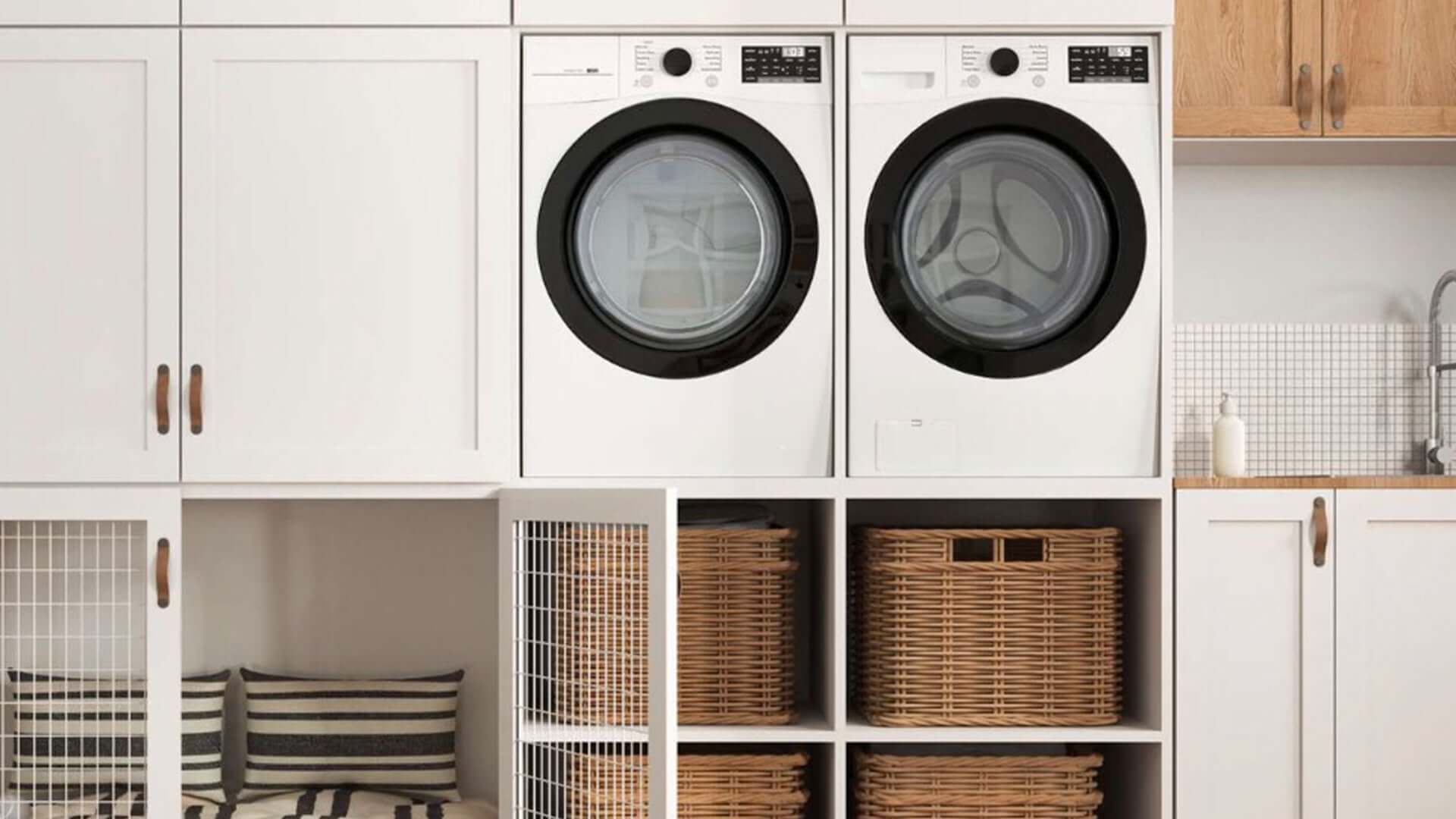1. Understand the Sources of Noise
Before diving into soundproofing techniques, it's important to understand where the noise is coming from. In a laundry room, noise typically originates from three main sources:
● Washer and Dryer: The mechanical operation of these appliances generates significant noise, including vibrations, water flow, and the tumbling of clothes.
● Water Pipes: The flow of water through pipes during the washing cycle can create additional noise, especially if the pipes are not properly insulated.
● Vents and Ducts: Airflow through vents and ducts can also contribute to noise levels, particularly if the dryer vent is not securely installed.
2. Install Vibration Pads
One of the simplest and most effective ways to reduce noise from your washer and dryer is to install vibration pads under the feet of these appliances. Vibration pads are made from rubber or foam and are designed to absorb vibrations, preventing them from transferring to the floor and walls. This can significantly reduce the low-frequency noise that is often the most disruptive.
3. Use Acoustic Panels on the Walls
Acoustic panels are a great way to absorb sound and prevent it from bouncing around the room. These panels are made from materials like foam or fabric and are designed to reduce echo and dampen sound. Installing acoustic panels on the walls of your laundry room, particularly around the washer and dryer, can help contain the noise within the room.
4. Soundproof the Doors
Doors are often the weakest point in soundproofing any room. If your laundry room door is hollow, consider replacing it with a solid-core door, which is much more effective at blocking sound. Additionally, you can add weatherstripping around the edges of the door to seal any gaps where sound might escape. For extra soundproofing, install a door sweep at the bottom of the door to prevent noise from seeping out through the gap beneath.
5. Insulate the Walls
If you’re renovating or building a laundry room, consider adding insulation to the walls. Fiberglass insulation or rock wool batts are excellent for soundproofing because they absorb sound waves, preventing them from passing through the walls. If you're unable to add insulation behind the walls, another option is to apply soundproofing paint, which can help reduce noise, though it won’t be as effective as insulation.
6. Add a Drop Ceiling with Acoustic Tiles
If your laundry room has a high ceiling, sound can reverberate and amplify within the space. Installing a drop ceiling with acoustic tiles can help to trap and absorb this sound. Acoustic ceiling tiles are specifically designed to reduce noise levels by absorbing sound waves and preventing them from bouncing off the ceiling. This is particularly useful in laundry rooms with hard, reflective surfaces.
7. Seal Gaps and Cracks
Sound can easily escape through even the smallest gaps and cracks in walls, floors, and ceilings. To minimize noise leakage, inspect your laundry room for any cracks or gaps and seal them with caulk or acoustic sealant. Pay special attention to areas around pipes, vents, and electrical outlets, as these are common places where sound can escape.
8. Use Soundproof Curtains
If your laundry room has windows, sound can also escape through the glass. Soundproof curtains are a practical solution for reducing noise transmission through windows. These curtains are made from thick, heavy materials that absorb sound and can also block light. Install them over your laundry room windows to help contain the noise.
9. Install a Soundproof Door
For those who need maximum noise reduction, consider installing a soundproof door. These doors are typically made from a combination of materials, such as solid wood, steel, or a composite core, which provides superior soundproofing. Although more expensive than standard doors, a soundproof door can be a worthwhile investment if noise is a significant concern.
10. Soundproof the Floor
If your laundry room is located on an upper floor, noise can easily travel through the floor and disturb the rooms below. To soundproof the floor, consider adding a layer of soundproofing underlayment beneath your flooring. This material, usually made from rubber or cork, helps to dampen vibrations and reduce noise transmission. Additionally, adding a thick, plush rug can further absorb sound and make the room more comfortable.
11. Install Dryer Duct Insulation
Dryer ducts can be a source of noise as air flows through them during operation. To reduce this noise, you can wrap the dryer ducts with insulation. This not only helps to reduce the noise but also improves energy efficiency by preventing heat loss.
12. Consider Relocating the Laundry Room
If soundproofing measures are not enough to reduce the noise to an acceptable level, you may want to consider relocating the laundry room to a less noise-sensitive area of your home, such as the basement or garage. While this is a more drastic solution, it can be effective if noise is a significant issue.
Conclusion
Soundproofing your laundry room is an investment in the comfort and tranquility of your home. By taking these steps to minimize noise, you can create a more peaceful environment and prevent the sounds of laundry day from disrupting your daily life. Whether you’re making a few simple adjustments or undertaking a full renovation, these soundproofing strategies will help you enjoy a quieter, more efficient laundry room.



